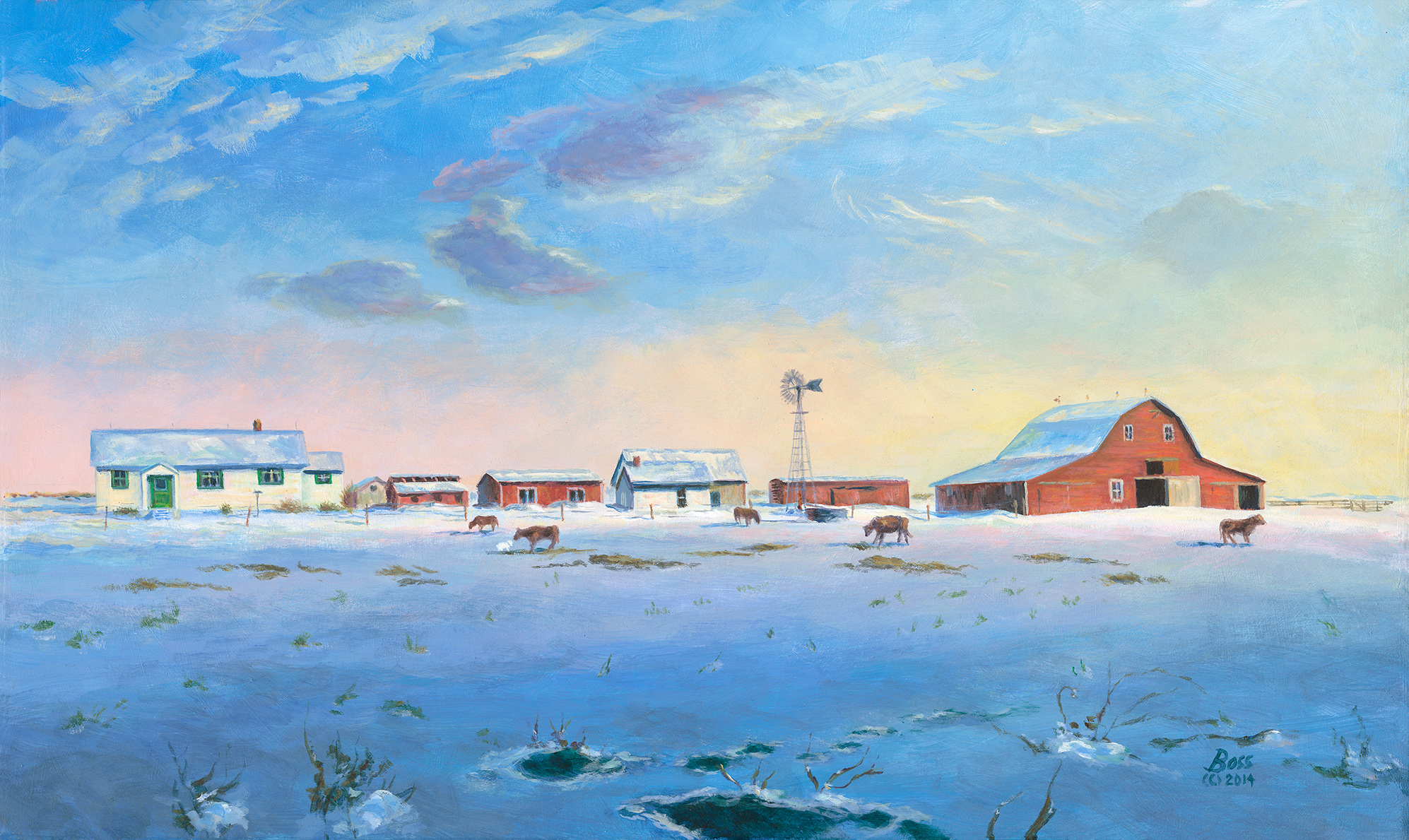
In late 2013 my good friend and occasional political sparring partner, Palmer Mai of St. Louis, asked if I would consider painting the Mai family farm during the World War II era. The farm where he and his family lived was south and west of WaKeeney. Palmer sent a photograph with an aerial drawing or perspective, of the of location of each building.
It didn't take long to say yes as I enjoy painting the memories of bygone Kansas. Palmer wanted a snowy winter scene. The painting is looking north, and an early morning sunrise was a good way to capture nice bright color. It was easy to render as there was a drop in the ground toward the viewpoint, allowing it to be thrown into a somewhat darker blue shadow. That allowed the bright sunlight to hit the different farm buildings and nice shadows on their left or west side.
Palmer helped me by writing a few heartfelt thoughts and memories about the family farm and they are below.
The painting by Mike Boss is both symbolic and representative of many farms and families that were founded and functioned in the dynamic rural development of the United States during the late 19th and early 20th centuries. The scene also represents a history of the experience, and the hard work, sacrifice and success of Solomon and Elizabeth Mai and their children. The couple was one of number of immigrants--Germans from the Volga River region in Russia --that settled in Western Kansas, specifically, Trego, Ellis and Russell Counties .
Careful year-to-year management of land with diverse crops, maintaining livestock (cattle and horses), as well as a variety of domestic fowl, all provided a solid basis allowing the farm to survive so many challenges, intact. Those challenges included the infamous Drought and Dust Storms as well as the Great (Economic) Depression of the 1930s from which many farm/families did not recover and vanished.
Typical of the period, the farm operated for many years as a self-sufficient economic and family unit.
The cycle of various natural changes took place over time: Deaths, marriages, and divisions of property.. The earlier deaths of three young children, including one struck by lightning, all within less than three years, was a particularly trying time.
A major turning point occurred when a tornado destroyed most, but not all, of the farmstead buildings in 1968. There were no injuries. Various considerations did not justify any rebuilding.
The farmstead passed from the family name in 2002 after 92 years. Only two structures survive---one, a replacement for the “milk/wash house” standing by the windmill in the foreground and, the railroad boxcar in the right background.
The painting stands not only as a tribute to this particular family. It should also serve as a something of a memorial of a special time period, representative of many other unnamed farm families and for their following generations.